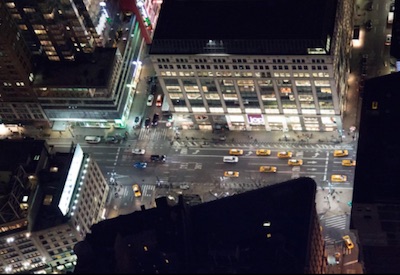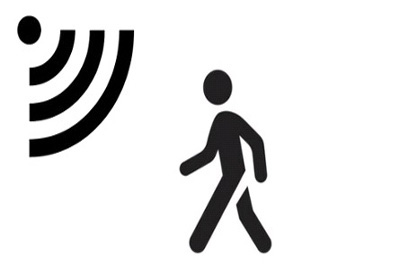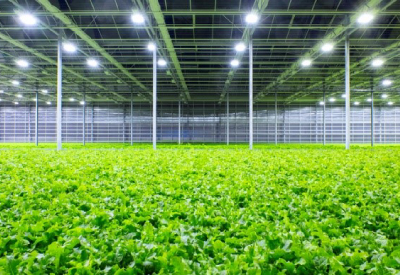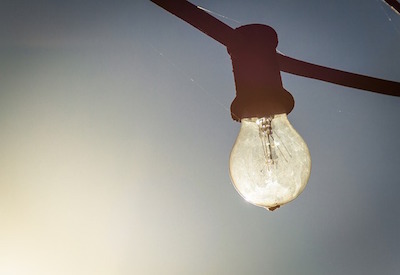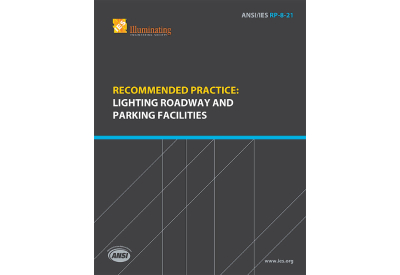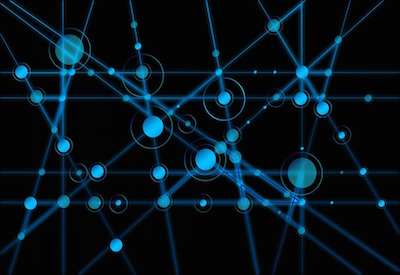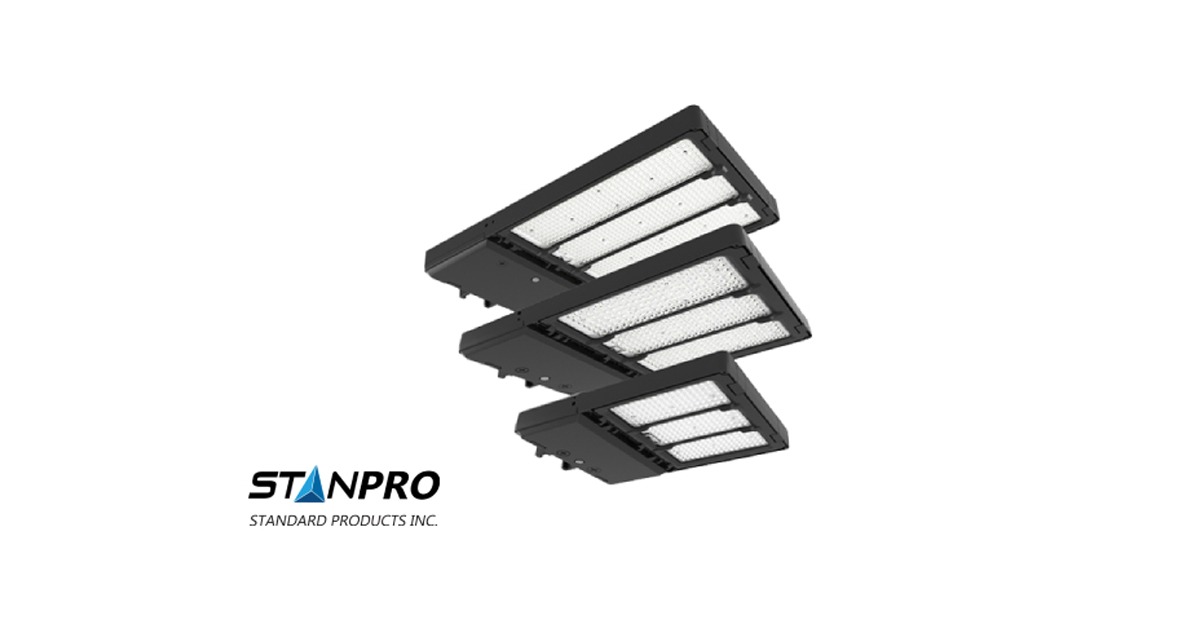Shedding Some Light on Commercial and Industrial LED Applications: Part 1
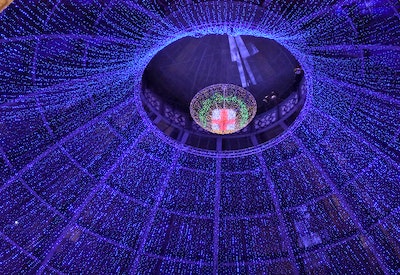
Nov 27, 2020
By Lynn Belken and Katy McSurdy
In a recent article on LEDs, we covered numerous topics and questions to help consumers buy the right bulb for their needs and be happy with their purchase. But LEDs are not only for residential use. In fact, some of the first applications/uses of LEDs (after indicator lights) were for exit signs, traffic lights, taillights, and refrigerated case lights.
LEDs are used in many different commercial and industrial settings, from restaurants to manufacturing, to office buildings and rental properties. In a typical restaurant, for example, lights are usually on for 16 to 20 hours a day, which can add to heating and cooling costs.
LED light systems are popular for commercial and industrial (C&I) buildings because these spaces are characterized by high light output and long operating hours. Since LEDs offer extended lifespans, lower energy consumption (LED upgrades can generate as much as 75-90% improvement in energy efficiency), and fewer maintenance requirements, they are an ideal solution to help building owners can save money, operate more efficiently, and improve the customer and employee experience. To learn more about all the benefits of LED lighting in the C&I sector and the future of LEDs, we interviewed Leora Radetsky, Senior Lighting Scientist at the DesignLights Consortium (DLC). Leora went to the University of CO—Boulder and earned a degree in architectural engineering, with an emphasis on Illumination. She has a master’s degree in lighting from Rensselaer Polytechnic Institute.
KM: Can you tell us a little more about your background?
LR: I knew early on I liked lighting and actually thought I would be an architect and focus on daylighting, but I studied under David DiLaura, who is a leader in lighting education, and when I graduated I knew I would be a “lighting nerd” for the rest of my life. I’ve been at the DLC for one year. Prior to that I worked at the Lighting Research Center for almost 12 years, and Lighting Analysts, Inc. for almost 11 years.
KM: Can you share the history of LEDs in the C&I market?
LR. The first products in the market were non-white or coloured LEDs, which were used in exit lights and traffic signal lights. Then we started to see the adoption of white LED lights; some of the first applications of these were in down lights (can lights), refrigerator case lights, street lights, and area lights (such as parking lots). More and more products started to emerge because there were numerous applications where LEDs made sense. Some of the impetus of that was because of government intervention and the setting of good, quality specifications. Also, LEDs had the ability to be instant on/off, to be paired with occupancy sensors, had improved operation in cold temperatures (long life and quality of light output), and the ability to easily fit into small spaces. All of this led to mainstream adoption because the technology and the application were a good fit. The DLC came into the picture to evaluate and list products at the request of energy efficiency (EE) programs. At the time, EE programs were using specifications from the Department of Energy (DOE) for commercial products and specifications from Energy Star for residential programs, downlights and A lamps. EE programs are often concerned about the labour required to review these products and specifications, and in 2009 DLC was asked to evaluate products for them and develop specifications to reduce the burden on EE programs.
KM: I could see how having inconsistent specs could be a real problem.
LR: Yes, we also see this issue in horticulture. The goal of the specification is to have a way to objectively review the products to help EE programs. We are starting to see regulations in controlled environment agriculture (CEA) and agriculture that differ from state to state. Having one specification also helps the manufacturer as well so they can more easily develop products that meet a certain set of requirements.
KM: What is the most common type of application of LEDs for non-residential outdoor lighting and in commercial and industrial buildings?
LR: The Department of Energy (DOE) reports indicate roadway, street lights, and area lights are the most common white LEDs. We’ve had an almost complete transformation to LED with traffic lights and signal lights from incandescent. And we’re also seeing quite a bit of LED adoption in message boards, signs, and channel lighting. In commercial and industrial buildings, the most common products listed on the QPL for indoor are troffers — a rectangular or square light fixture that typically fits into a modular dropped ceiling grid (i.e. 2′ by 2′ or 2′ by 4′). The second most common listed products on the QPL are high bays and low bays, which are mounted at high ceiling heights to illuminate a large space. We also see a lot of listings for a type of LED suspended below the ceiling — a linear ambient fixture, with narrow width.
KM: Are there areas in a business/commercial building where they should not be used for some reason?
LR: I would say that the most important characteristic of LEDs is that they should be rated for specific applications. For example, you wouldn’t want to use a product that’s not rated for high temperatures in a high-temperature situation. In a retrofit application, an example is a small enclosed fixture that is close to a ceiling, if it is not operating well with high temperatures, then it will fail prematurely. Or light output may depreciate or change in colour. In those kinds of fixtures you want an integrated light source that is designed for that application. Another thing that is problematic is that you don’t want to have unshielded LED fixtures pointing at peoples’ eyes. The product should also be designed for people as well as what it is lighting.
KM: Can you tell us more about increased controllability and networked capabilities of LED lighting?
LR: The first thing I think about is a luminaire level lighting control (LLLC), which is a fixture that has an integrated sensor. This is seen in troffers and gives better granular control, so instead of just having one fixture for an entire space or a larger zone you can now have a sensor in every product. The benefit of that is that you can, for example, reconfigure a space for different use cases if walls or desks move. Instead of having to rewire, now you can use an app to dynamically change zoning of fixtures as far as how they operate with each other and how they operate in the space. One of the things we’re really interested in for networking capabilities and controls is future proofing. Lights will be in a building for 10-15 years, so we want to talk about how the system that is in the building is future-ready. One of our specs for this requires dimming to give more control in the future.
A non-energy benefit of connected lighting is that energy use and occupancy use can help create dynamic seating in an office or help identify resources that are needed like a hospital crash cart. You can put an RFID location tracker on the cart and have the connected lighting able to identify its location. You could also locate empty conference spaces or meeting spaces and guide people to those spaces. For outdoor lighting, for example, a parking garage can have granular control and a system would send you to a specific location rather than you picking your own spot.
Networked lighting can also help you optimize light levels. For example, when fixtures are first installed, often they are designed for maintained light levels, to have enough light 3-5 years in the future. They might be really bright at installation. You can install high end trim used to dim down lighting to save energy and make lights more comfortable in the meantime. The granular control is also great for helping people who are more sensitive to light and letting people adjust to their preference.
KM: What can you tell us about smart lighting and other new innovations in LED lighting?
LR: The promise of smart lighting (connected lighting) is that it is customizable and personalizable to different occupants (age, interest, or other things). It can be connected to other lights, building systems, or potentially to devices, like an app on a phone. It can also be future proofed to help buildings perform better. For example, think about COVID-19 and buildings; now people are thinking about where people are within the space and if they are too close together or unable to maintain social distancing. Smart lighting can provide an important opportunity in this scenario. Imagine that you’re wearing a badge (with a location tracker); because of the ubiquity of LED lighting and the sensors inside the lighting, the system can detect if there are too many people in a hallway or conference room and reroute them to use a different room or hallway to help maintain social distancing. The badge could also help if there was a positive case in your building. By using the building data to track people’s location and then analyzing those data, you might be able to tell which badges interacted together and what spaces they were in. Which can be helpful for both social distancing and cleaning purposes.
New innovations that are coming down the line for LED lighting is how it can impact our health in a beneficial way. UV germicidal irradiation lighting is currently provided by low pressure mercury lamps, which are installed in HVAC systems and other spaces to disinfect the air. Currently, the most cost effective and energy efficient lamps in this area are not LED, but LED is making headway. Interest in this type of lighting has picked up due to COVID-19 and awareness of pandemics that can emerge in the future. There could also be applications for cleaning/sterilizing surfaces in hospitals instead of using harsh chemicals.
KM: Has COVID-19 made an impact on the business with so many people working from home?
LR: One of the interesting impacts of COVID-19 on businesses revolves around evidence/data that shows that energy savings when buildings were not occupied across the country (because people were working from home). However, energy use was still pretty high even with no one occupying the buildings because lights were still on. Lights should be off when no one is there, but emergency requirements or lease requirements require building operators to keep some on. Is there a way that we can think about optimizing or changing these requirements when buildings are not occupied for weeks or even months to help save energy? To keep systems maintained and ready to go there has to be some amount of energy use; they can’t be completely powered down. This is where a networked lighting system and future proofing can come into play and help us be smarter. We can save more energy if we think about what we are doing. For example, a business could potentially save energy by dynamically configuring the lighting system to maintain reduced spacing and adjust to low occupancy. A networked lighting system would allow the building operator to remotely look at the different zones of the building to dim the lights or turn them off, and also set them to come on if occupancy is detected through a dashboard or app.
KM: What are the benefits beyond energy savings for LED lighting in commercial applications?
LR: There’s quite a list of advantages with LEDs, including extended lifespans, lower energy consumption, fewer maintenance requirements, and improved experience:
• extended life — they last longer and maintain light output longer, if the application is optimized (not too hot).
• less maintenance — because they last longer there are less maintenance requirements and people are more satisfied because you get the same type of lighting for a longer period of time.
• range of colours — you can tune LEDs to get different types of colour rendering and different white appearances. There are limitless colour choices on the spectrum that allow you to get the type of light you want. From warm white light to cool white light, you can choose the light colour that makes the most sense with the space.
• dimmable with control — LEDs are implicitly dimmable, so you have a controllable aspect that you can enable. If you have a dimmable source, you can future proof the system with controls — local or networked — which is implicitly much easier than other technologies with fewer limitations.
• instant on/off — no slow warm up time like you have with CFLs, high pressure sodium, and metal halide. You get the full light output in milliseconds. Because they turn off instantly it makes them a good light for indicator lights so you know that something is off.
• more applications — LEDs can be used in smaller spaces like car doors, dashboards, etc. enabling light where you didn’t have it before.
KM: What do you foresee is the biggest area of growth in this market?
LR: In terms of traditional commercial and industrial applications where we are talking about general illumination, I think that networked lighting controls, and the IoT — connecting to the cloud or other building systems — is going to be a large area of growth. That goes for some incremental energy savings, but more so the non-energy benefits like customizability. Customizability can be part of smart lighting, providing the ability to colour tune, potential circadian lighting where lighting can alert you, it can provide you with light for seasonal affective disorder or lights that can provide you the right stimulus to wake up or go to sleep at the right time. But you can also customize your workspace. Which is not only a factor in offices, but as remote working becomes more and more common you are going to see customization of the workspace at home to help with productivity. Now, it can’t help parents with distance learning, but a light at the door could turn red if they are on a zoom call and can’t be disturbed. It’s these types of innovations that will provide an area of growth for this market.
Another huge area of growth though, is Indoor agriculture or controlled environment agriculture (CEA). So let’s talk about that next.
Lynn Belken is A Senior Marketing Account Representative for Nexant. Katy McSurdy is a Content Marketing Strategist, also with Nexant. This article was first published as a Nexant blog: www.nexant.com/resources/leds-101-conversation-experts.
Photo: Galleria Vittorio Emanuele II in Milan, Italy, by Pepe Srz

